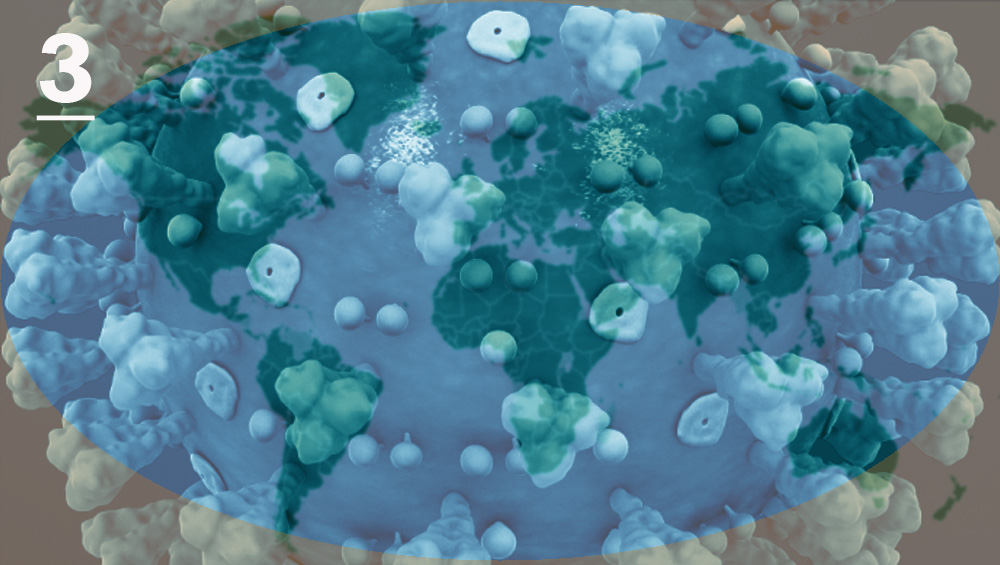
• Part 1: The effect of cancellations of exhibitions and fairs
• Part 2: Self-isolation, moving online and financial implications
by ANNA McNAY
In Italy, the first western country to be badly hit by Covid-19, Francesca Pasquali (b1980, Bologna) describes the situation vividly: “Helplessness, fear, confusion – these are just some of the sensations we’re experiencing at the moment. Some people are gone, others are waiting for a verdict, poised between life and death. Uncertainty walks beside me, beside us, hour after hour, day after day. However, I am convinced that in such a dark and sad period, we must find within us resources and motivation to make sure that everything starts again as soon as possible, with renewed enthusiasm and desire to do. DO! This is the imperative … My doing is in art, my welcoming refuge.
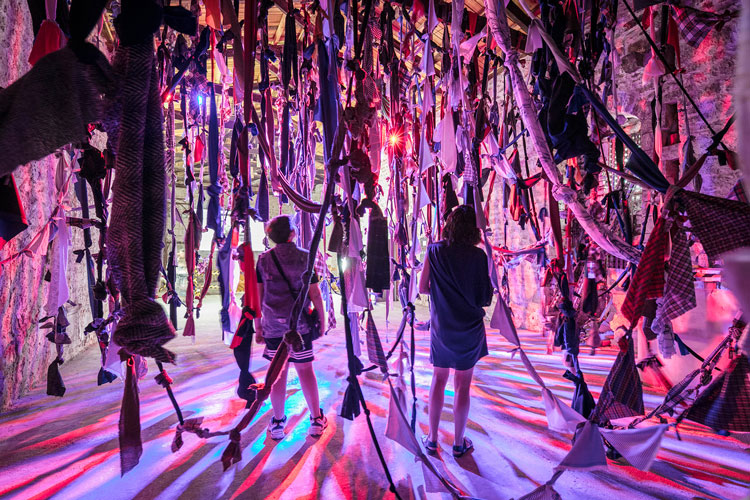
Francesca Pasquali, Labirinto, 2019. Made during the Mutations Festival, 2019, Ruvo di Puglia, Italy, in collaboration with Francesca Pasquali Archive and La Capagrossa. © the artist.
I live in the countryside and my studio is a few steps from the house. I see it from the window as soon as I wake up. It just waits to get dirty, to be messed up! I am lucky to be able to continue working, pending receipt of new dates for the exhibitions that have been postponed. Postponed? Cancelled? Who can say with certainty? Today the phone no longer rings, no emails arrive except those that communicate that exhibitions, fairs and other events are postponed. The galleries are inactive; in Italy, culture was the first sector to be affected by closures. But we did not give up, we invented a new way of enjoying art, because the desire to know and see does not subside.
Never before have social media and the internet been so vital a means of connection between the isolated self and the whole world. There is fear, it is tangible, but I don’t want to get overwhelmed by emotion. These are the moments in which a sense of community, of union, re-emerges, and the true values that keep a system up and running return. The same values that I try to convey with my work: involvement, activation, sharing, love for beauty. Culture is a common good, essential.”
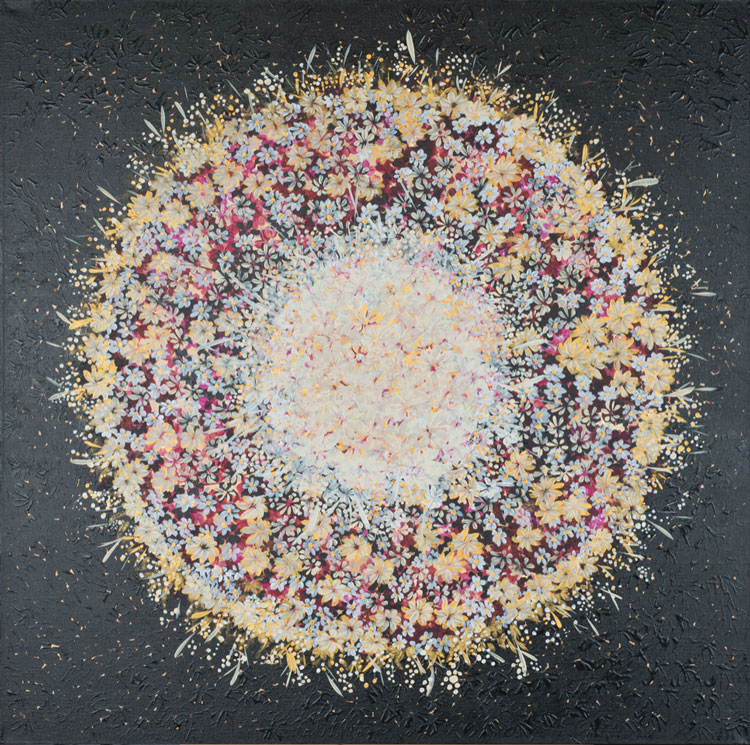
Veronique Maria, Gratitude Mandala 12, 2018. Mixed media on canvas, 100 x 100 cm. © the artist.
“It’s like wartime,” says Veronique Maria (b1950s, London). “People are reassessing their values and thinking in different ways. It’s a massive opportunity for waking up. I’m optimistic. If the main energies of the world are fear and love, it’s better to live by love.” Linda Ingham (b1964, Cleethorpes, UK) says: “It’s a time to pare life down to the most important basics and support each other.”
Similarly pragmatic, Kelly Sweeney (b1977, London) says: “I’m an artist, so I’m used to spending a lot of time alone, consumed by my self-imposed workload, so life feels pretty normal so far. It’s like a residency, if you take out all the concerns about income, etc. In many ways, we’re incredibly vulnerable as artists, but we’re also built for this: we’re resilient to financial insecurity and uncertain times.”
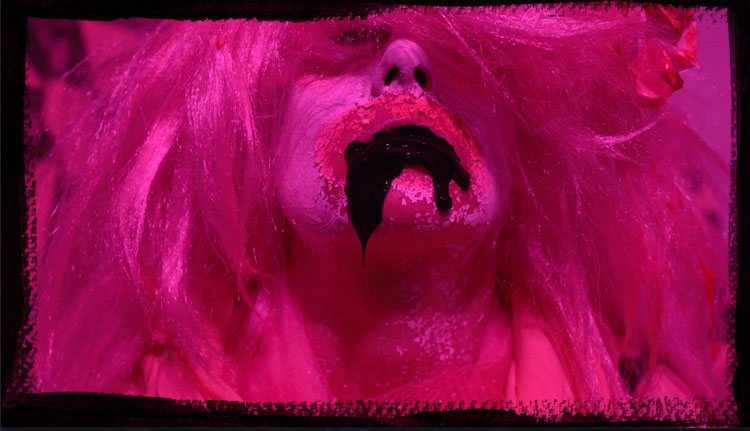
Kelly Sweeney, Colour Me Pink 2019. Film still. © Kelly Sweeney.
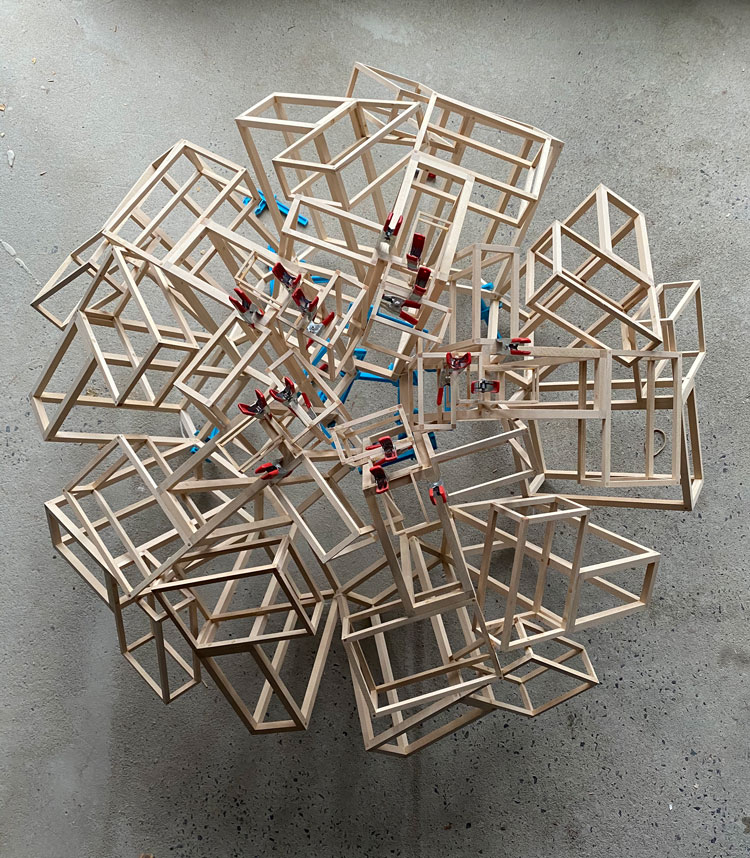
John Powers, Structural Study (play), 2020. Basswood, bamboo, clamps and zip ties, 30 x 24 in. © the artist.
John Powers (b1970, Chicago) says that very little has changed in his personal schedule, and that he and his partner, a graphic designer, are keeping “pretty regular hours” – he in his workshop in the basement, her in the loft – and that their days end “with a sit-down dinner together, or, if it’s a nice night, a visit outside”. He continues: “About a year and a half ago we were forced to give up our apartment in the city [New York], when it was sold for $2m more than we could afford. Rather than scramble to find another apartment, we put our things into storage and moved to our summer place, which is about an hour up the Hudson from the city. While the property is very close to some of the earliest outbreaks in the state, our house is at the very end of a dirt road, but we are not isolated. We have neighbours we are very close to. So, we feel neither exposed nor cut off. I understand that what I am describing is luxurious in relation to the circumstances most New Yorkers find themselves in right now. And while I feel profoundly grateful for the place we have built together, at a time when I am fielding so much stress and distress from family and friends, the thing I feel most fortunate for in this moment is being an artist. Not because I think this is ‘my moment’ or I have anything profound to say, but only that I feel very well suited to doing what is being asked of me – being in my head, keeping to myself, staying at home.”
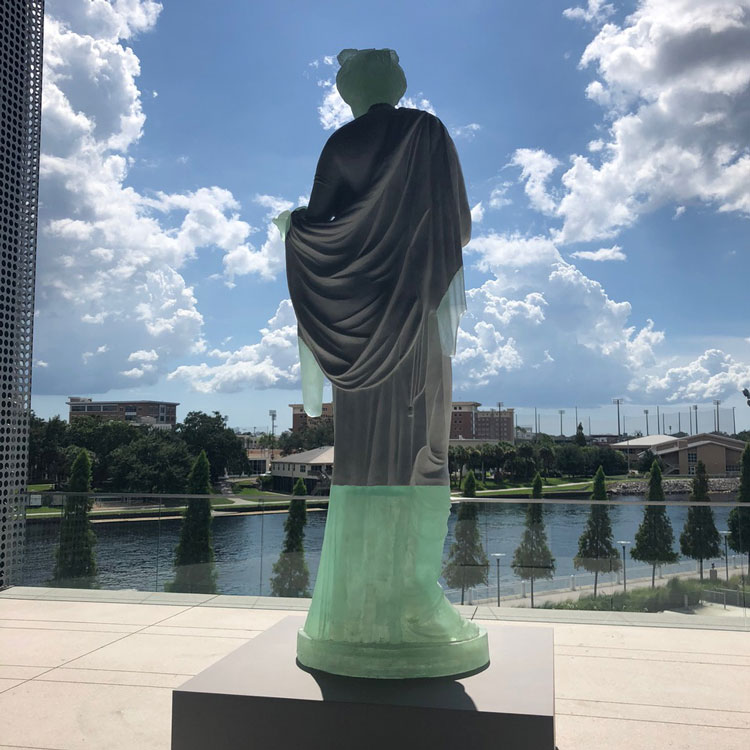
Patricia Cronin, Aphrodite Reimagined, 2018. Bonded carrara and resin, monumental outdoor sculpture commission, in ‘Patricia Cronin, Aphrodite and the Lure of Antiquity,’ Tampa Museum of Art, Tampa, FL, USA. © the artist.
Patricia Cronin (b1963, Beverly, Massachusetts) likewise thinks creative people are very well suited to self-isolation and quarantine, because “we mostly work alone inside all day on projects that compel us”. She is at the research stages of two major projects and has packed up her books, some pencils and watercolours and a large sketchbook, and headed out to her beach place where she is “hunkered down for the duration”, adding jokingly: “I’ll probably last two weeks and then want to get back to the studio and really get to work!” On a practical level, she also says: “Who knows how severe this will be and how long it will last. I don’t know what the world will look like on the other side of this, but it will be very different. So far, the pandemic is showing us all the cracks in American capitalist system, most glaringly education and healthcare. History is comforting. Looking back and seeing how systemic cultural, legal, political and economic upheavals changed so many lives before us helps me understand now and how to forge a way forward as a human being and in my work.”
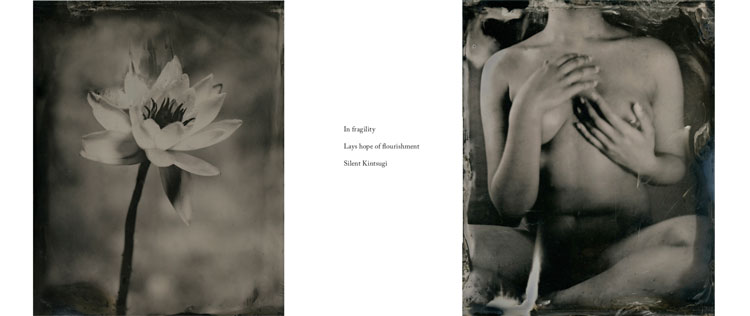
Nicolas Laborie, Flaming Lotus, 2019. Wet plate collodion, Haiku, 2019; Silent Kinsugi II, 2019. Wet plate collodion. © Nicolas Laborie
This period of imposed isolation is, as numerous of the artists cited have already reported, a “golden opportunity” to reappraise certain aspects of their practice, or to try something new. The London-based photographer Nicolas Laborie (b1970, Paris) says: “I’m looking to learn new skills and find a way to adapt myself, but it’s very difficult as I was putting so much energy into the jobs that have now been cancelled or postponed indefinitely. My mental health is important and I cycle 15 to 30km regularly and try to eat healthily, but with the current atmosphere in the supermarkets and the selfishness of many people, it doesn’t make it easy. But I remain calm. Meditation and mindfulness help greatly.”